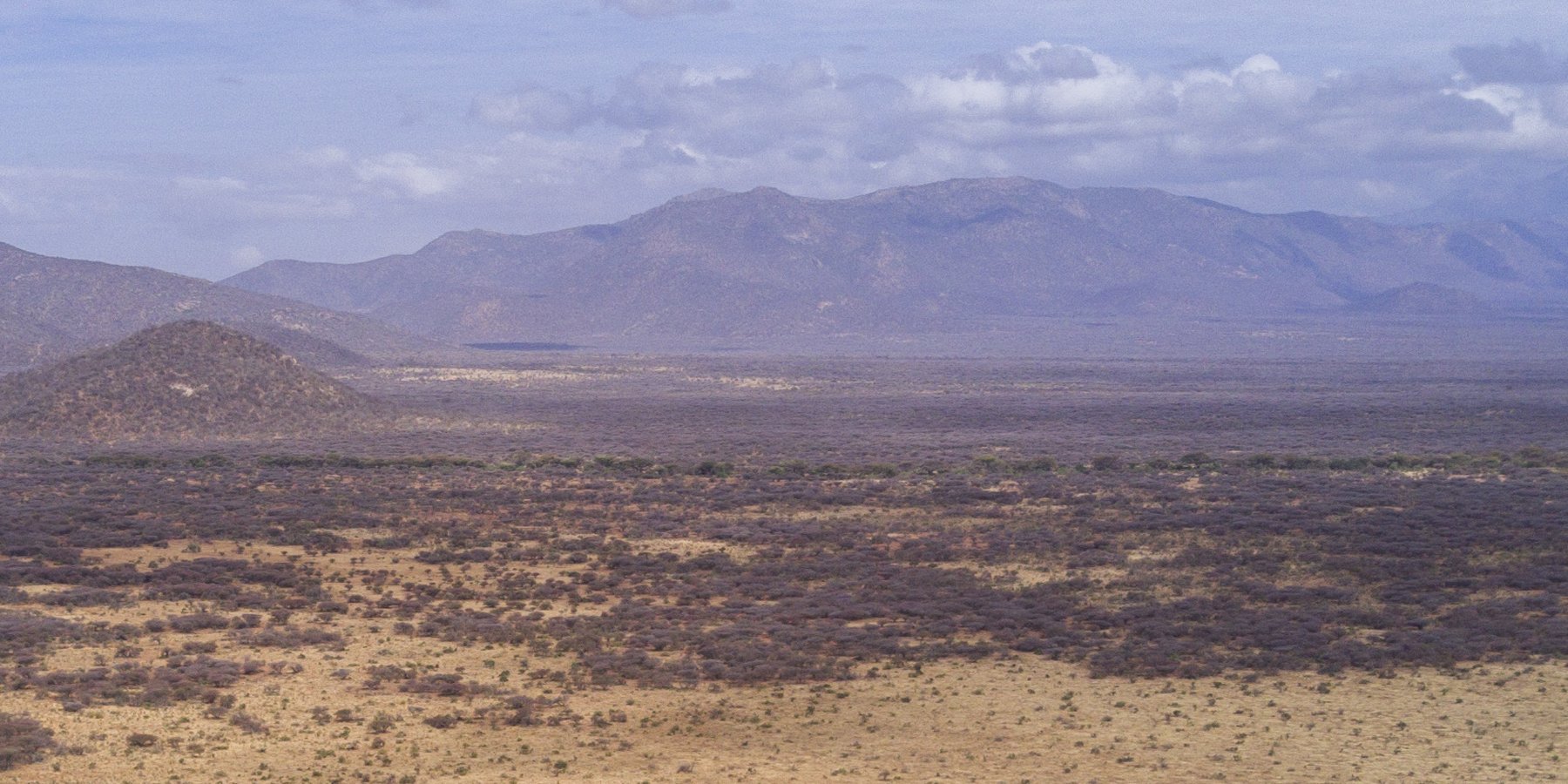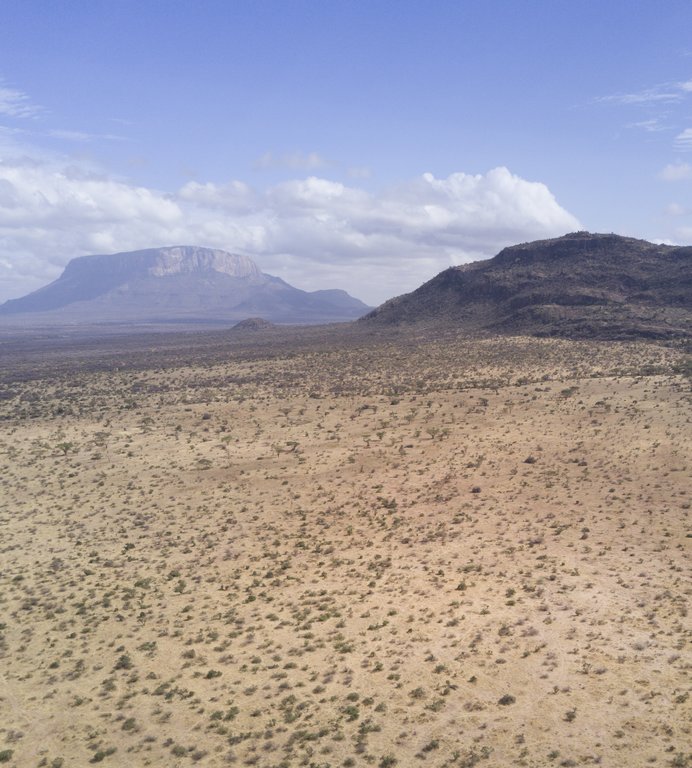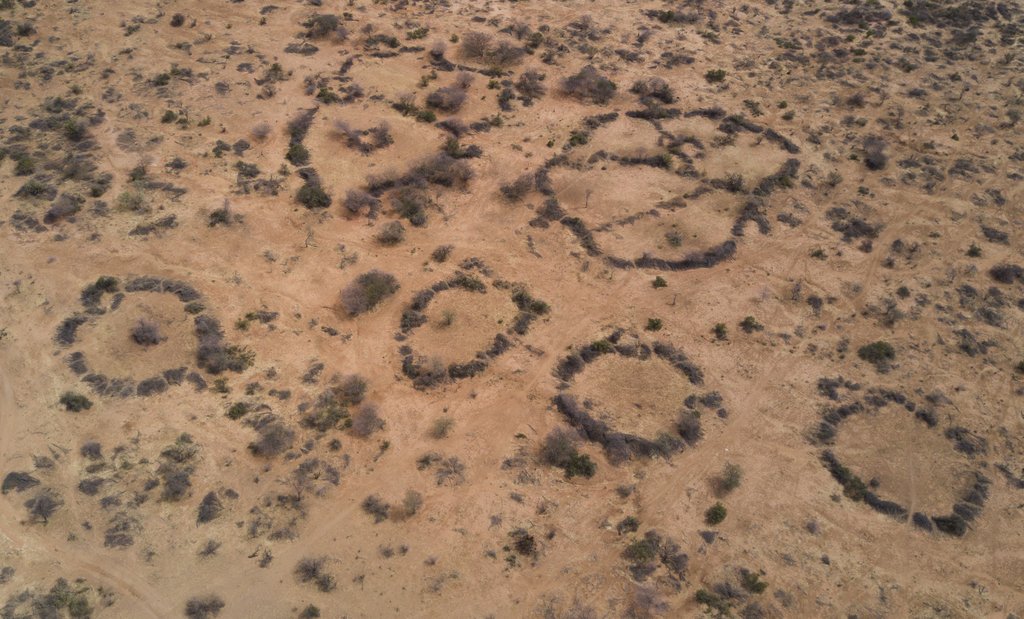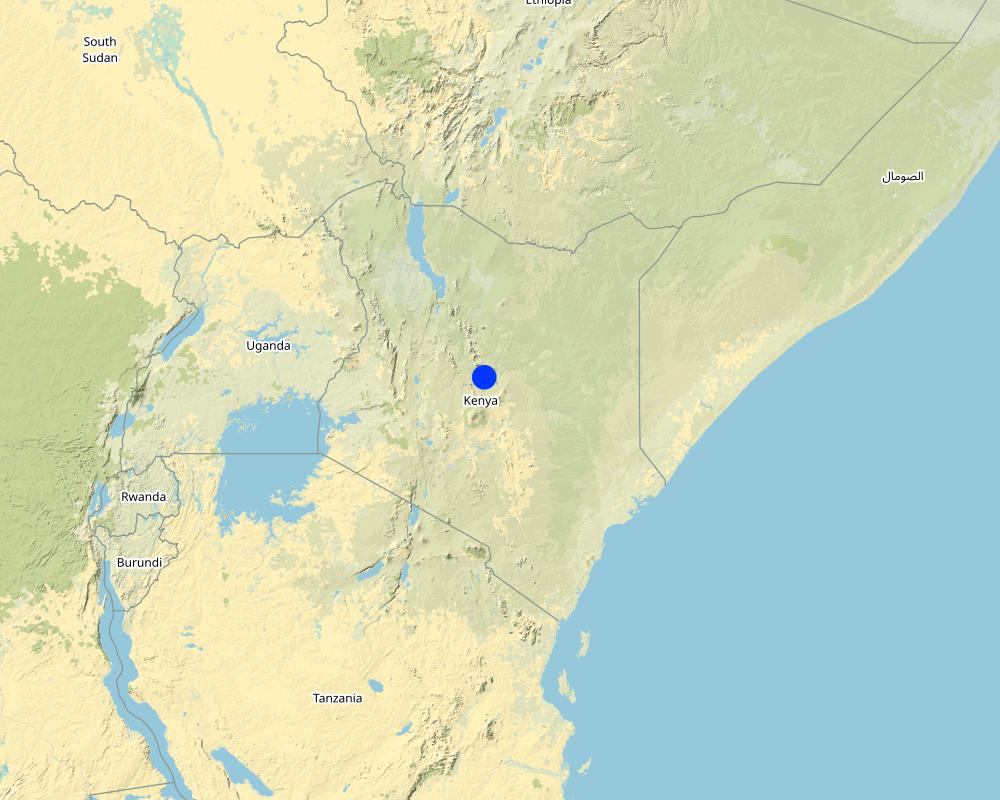Holistic Rangeland Management combined with high end tourism [Кения]
- Создание:
- Обновить:
- Составитель: Harry Wells
- Редактор: –
- Рецензенты: Donia Mühlematter, Rima Mekdaschi Studer, Simone Verzandvoort, Hanspeter Liniger, Joana Eichenberger
"Ramat engop"
approaches_3399 - Кения
- Полная аннотация в формате PDF
- Полная аннотация в формате PDF для вывода на печать
- Полная аннотация в формате интернет-страницы
- Полная аннотация (неотформатированно)
- Holistic Rangeland Management combined with high end tourism: 2 ноября 2021 г. (public)
- Holistic Rangeland Management combined with high end tourism: 10 августа 2018 г. (inactive)
- Holistic Rangeland Management combined with high end tourism: 22 октября 2018 г. (inactive)
- Holistic Rangeland Management combined with high end tourism: 3 сентября 2018 г. (inactive)
- Holistic Rangeland Management combined with high end tourism: 6 мая 2018 г. (inactive)
Просмотреть разделы
Развернуть все Свернуть все1. Общая информация
1.2 Контактные данные специалистов и организаций, участвующих в описании и оценке Подхода
Ответственный (-ые) специалист (-ы)
землепользователь:
Название проекта, содействовавшего документированию/оценке Подхода (если применимо)
Book project: Guidelines to Rangeland Management in Sub-Saharan Africa (Rangeland Management)1.3 Условия, регламентирующие использование собранных ВОКАТ данных
Когда были собраны данные (на местах)?
11/02/2018
Составитель и ответственный/-ые специалист(-ы) согласны с условиями, регламентирующими использование собранных ВОКАТ данных:
Да
2. Описание Подхода УЗП
2.1 Краткое описание Подхода
The establishment of a community wildlife conservancy facilitates (1) 'holistic rangeland management' refering to a to the implementation of a suite of management practices aimed at sustaining and/or improving rangeland productivity such as 'bunched grazing' (livestock concentrated for short duration intensive grazing), short-term 'bomas' (livestock corrals occupied for ~7 days), clearing invasive species and reseeding with grass to assist land rehabilitation/restoration; and (2) High end tourism and monetary donations facilitated by the Northern Rangelands Trust provide funding for the implementation of improved grazing practices and additional income for the community and the reduction of livestock grazing pressure.
2.2 Подробное описание Подхода
Подробное описание Подхода:
Kalama Community Wildlife Conservancy has been established with a hierarchical structure led by a board of 13 members (5 female, 8 male), one representing each of the 13 'zones' of the Conservancy. There are also three subcommittees for grazing, finances and tourism. The main aims are to improve the involvement of the community members in the overall management of the conservancy, the generation of additional income from high end tourism and wildlife conservation and the investment into improved land management. The main sources of funding are revenue from contracted high end tourism operation and donations (facilitated by Northern Rangelands Trust). The approximate breakdown of the funding sources is: Tourism including selling of handicrafts (60%), Donors (25%), County Government (5%), Livestock Trading (5%), Camping (5%). Improved livelihood and ownership in the management as well as shared responsibility and benefits are key incentives for the community members.
Within the conservancy an attractive site on a hill overlooking the plains has been leased to an investor for the establishment of an exclusive tourist lodge on the principle of “invest, operate and transfer”, where the investor builds the infrastructure operates is for an agreed period and then transfers it to the community. Further several comping grounds are available for lower budget tourists. The conservancy profits from the neighbouring Samburu Game Reserves. This provides regular income from the lease of the land the entrance fees into the conservancy, employment opportunities for conservancy members (for catering, kitchen, house cleaning, rangers providing security for tourists and protection for wildlife as well as guides for safaris and for entertainment) and a market for selling handicrafts and souvenirs. Another cornerstone is their relationships with two trusts (Northern Rangeland Trust and the Grevy’s Zebra Trust). They have been supportive in the implementation of several holistic rangeland management practices, which include 'bunched grazing' (livestock concentrated for short duration intensive grazing), short-term 'bomas' (livestock corrals occupied for ~7 days), clearing invasive species and reseeding with grass to assist land rehabilitation/restoration. The main aims are to maintain and/or improve rangeland productivity. Regarding methods, 'bunched grazing' is implemented by a team of herders ensuring the livestock are in a tight herd. Short-term 'bomas' are established on bare ground in the traditional manor (i.e. laying cut thorny woody vegetation on the ground to encircle livestock and help protect them from depredation during the night). Invasive woody vegetation can be used to erect these 'bomas'. Invasive species (predominantly Acacia reficiens) is cleared by hand using machetes during the dry season; branches cut ~1 m above the ground to prevent regrowth. Cut branches are laid on the bare ground beneath and seeds of Cenchrus ciliaris hand-broadcasted prior to the onset of rains. Members of the Kalama Community Wildlife Conservancy carry out these activities, both paid (clearing invasive species and reseeding) and unpaid ('bunched grazing' and short-term 'bomas'). Land users and tourists enjoy and value the benefits of increased forage availability in areas successfully rehabilitated but are dissatisfied with the limited extent of the rangeland improvement.
2.3 Фотографии, иллюстрирующие Подход
2.5 Страна/ регион/ место, где применялся Подход
Страна:
Кения
Административная единица (Район/Область):
Samburu County
Более точная привязка места:
North of Archers Post Bordering Samburu Game Reserve
Map
×2.6 Даты начала и окончания реализации Подхода
Год начала реализации:
2006
Если год начала реализации Подхода достоверно неизвестен, дайте примерную оценку:
10-50 лет назад
2.7 Тип Подхода
- в рамках проекта/ программы
2.8 Каковы цели/ задачи Подхода
The main objectives of the approach are to maintain and/or improve rangeland productivity.
2.9 Условия содействующие применению Технологии/ Технологий в рамках Подхода или затрудняющие его
Социальные/ культурные/ религиозные нормы и ценности
- содействуют
Established traditional practice of erecting 'bomas', particularly using less valuable woody vegetation, facilitates implementation of short-term 'bomas' that only require a change in duration of occupancy.
- затрудняют
Traditional practices of herding one's own immediate family's livestock in separate herds deters land users from agreeing to combine herds into larger groups for 'bunched grazing' (also due to associated issues of disease transmission). Furthermore, lack of observation and enforcement of local grazing rules prevents necessary resting of grazing land.
Наличие/ доступность финансовых ресурсов и услуг
- содействуют
Supplementary income can lead to investment in activities unrelated to livestock husbandry (e.g. setting up small businesses or educating children) rather than increasing heard size, which may prevent further increases in pressure on the rangeland.
- затрудняют
Supplementary income often leads to the purchasing of more livestock, which further increases pressure on the rangeland.
Сотрудничество/ координация действий
- содействуют
Clearing of invasive species and reseeding with grass undertaken by land users from all villages/zones of the Kalama Community Wildlife Conservancy.
- затрудняют
Individual concerns are at odds with that of the wider community, leading to opportunistic breaking of grazing rules and deterioration of communally managed rangeland.
Нормативно-правовая база (землевладение, права на земле- и водопользование)
- содействуют
To some extent provides sense of ownership over the land, which may motivate involvement in sustainable land management practices.
- затрудняют
Tenure of of the land is communal but livestock ownership is individual or at the level of immediate families, which creates tensions and conflicts regarding sustainable land management.
Управление земельными ресурсами (принятие решений, осуществление и контроль за выполнением)
- содействуют
Community-elected board (representative of the 13 villages/zones) and grazing committee together enable formalisation of grazing rules into by-laws.
- затрудняют
Grazing rules and by-laws not well implemented or adhered to.
Осведомленность в области УЗП, доступность технической поддержки
- содействуют
Access to technical support from NGOs such as the Northern Rangelands Trust and Grevy's Zebra Trust.
- затрудняют
Lack of knowledge about SLM has lead to unsuccessful grassland rehabilitation efforts.
Рынки (для приобретения материалов и услуг, продажи продукции) и цены
- содействуют
Located close to livestock market in the local town, Archer's Post.
- затрудняют
Limited direct access to markets further afield (e.g. Nairobi or international markets), with better prices.
Объем работ, доступность рабочей силы
- содействуют
Casual labour easily found within the community.
- затрудняют
Large areas of land awaiting rehabilitation, which would require large amounts of labour.
3. Участие и распределение ролей заинтересованных сторон
3.1 Заинтересованные стороны, участвующие в реализации Подхода и их роли
- местные землепользователи/ местные сообщества
Local land users selected from villages/zones within the community of the conservancy.
Providing livestock for joint herding and boma-ing and providing labour for restoration activities (e.g. clearing invasive species and reseeding with grass). Provide services for the running of the wildlife conservancy and tourist activities.
- эксперты по УЗП/ сельскому хозяйству
Advisors from the two trusts: Northern Rangeland Trust and Grevy's Zebra Trust for the support in the design and the implementation of the improved rangeland management practices.
Providing technical knowhow and sharing experiences with other rangeland users where the practices have been applied.
- ученые-исследователи
Master students from the universities in Kenya
Investigating into the state of the rangelands and monitoring changes
- общественные организации
Northern Rangelands Trust and Grevy's Zebra Trust
Provided funds for learning visits to a ranch implementing 'Holistic Rangeland Management' in Zimbabwe and costs of implementation in Kalama Community Wildlife Conservancy. Also provided technical support.
- местные власти
County government employees related to tourism and management of Samburu Game Reserve
Making agreements for the use and sharing of income from tourism
- международные организации
Northern Rangeland Trust: Grevy's Zebra Trust
Joint planning of land management across the boundaries of the Community Wildlife Conservancy. Agreement for movement across boundaries and sharing of common resources
Если участвовало несколько заинтересованных сторон, назовите ведущую организацию:
Kalama Wildlife Community Conservancy
3.2 Участие местных землепользователей/ местных сообществ на разных стадиях реализации Подхода
| Участие местных землепользователей/ местных сообществ | Перечислите участников и опишите их вовлеченность | |
|---|---|---|
| инициирование/ мотивация | интерактивное | Using their experience setting up other community conservancies in Kenya, the Northern Rangelands Trust was able to assist in defining the organisational structure of Kalama Conservancy. However, conservancies are not set up without the interest of the community in question. |
| планирование | интерактивное | Kalama Conservancy's board, which plans the Holistic Rangeland Management activities, is composed of members of Kalama Conservancy and those elected by the members of the conservancy. The Northern Rangelands Trust, in particular, helps to plan activities. For example, the Northern Rangelands Trust raised funds to enable members of Kalama Conservancy to visit a ranch in Zimbabwe where Holistic Rangeland Management activities are practiced. |
| выполнение | интерактивное | Members of Kalama Conservancy carry out the Holistic Rangeland Management activities. However, 25% of the costs are covered by donations and training related to specific activities is provided by Northern Rangelands Trust and Grevy's Zebra Trust. |
| мониторинг/ оценка | интерактивное | The Northern Rangelands Trust commissioned a baseline survey of rangeland health in Kalama Conservancy, which was conducted in 2013. However, the Rangeland Coordinator, Benson Lelukai, was also trained by Northern Rangelands Trust to conduct informal rangeland health monitoring. As yet, no reports are available documenting the success or otherwise of the approach. |
3.4 Принятие решений по выбору Технологии/ Технологий УЗП
Укажите, кто принимал решение по выбору применяемой Технологии/ Технологий:
- преимущественно специалисты по УЗП после консультаций с землепользователями
Поясните:
The Holistic Rangeland Management activities are closely modeled on those advocated by the Savory Institute. The Northern Rangelands Trust facilitated the introduction of the practices (e.g. bunched grazing and more frequently moved livestock corrals), which were implemented following consultation with Kalama Conservancy's members.
Поясните на чём было основано принятие решений:
- личный опыт и мнения (незадокументированные)
4. Техническая поддержка, повышение компетенций и управление знаниями
4.1 Повышение компетенций/ обучение
Проводилось ли обучение землепользователей/ других заинтересованных лиц?
Да
Укажите, кто проходил обучение:
- землепользователи
Тип обучения:
- общие собрания
4.2 Консультационные услуги
Есть ли у землепользователей возможность получать консультации?
Да
- personal communication
Описание/ комментарий:
The community work closely with Northern Rangelands Trust, which can provide advice.
4.3 Институциональная (организационная) поддержка
В ходе реализации Подхода были ли организованы новые институциональные структуры или поддержаны уже существующие?
- да, умеренно
Укажите уровень, на котором структуры были укреплены или вновь созданы:
- местные
Опишите организацию, функции и ответственность, членство и т.д.
Establishment of board and grazing committee facilitate conservancy-level decisions.
Укажите тип поддержки:
- финансовая
- повышение компетенций/ обучение
Подробнее:
Northern Rangelands Trust provide financial assistance (USAID funding) and training together with Grevy's Zebra Trust (FAO funding).
4.4 Мониторинг и оценка
Являются ли мониторинг и оценка частью Подхода?
Да
Комментарии:
But, so far, monitoring is informal and available documentation reporting outcomes of the approach is limited.
Если да, будет ли данный документ использоваться для мониторинга и оценки?
Нет
4.5 Научные исследования
Были ли научные исследования частью Подхода?
Нет
5. Финансирование и внешняя материальная поддержка
5.1 Годовой бюджет мероприятий по УЗП в рамках Подхода
Укажите годовой бюджет мероприятий УЗП в рамках Подхода в долларах США :
24447,00
Если точный годовой бюжет неизвестен, укажите примерный диапазон затрат:
- 10000-100000
Комментарий (например, основные источники финансирования/ ключевые доноры):
Main sources of funding are revenue from contracted high end tourism operation and donations (facilitated by Northern Rangelands Trust). Rough breakdown: Tourism including selling of handicrafts (60%), Donors (25%), County Government (5%), Livestock Trading (5%), Camping (5%).
5.2 Финансирование и внешняя материальная поддержка, предоставляемая землепользователям
Предоставлялась ли землепользователям финансовая/ материальная поддержка для применения Технологии /Технологий?
Да
Если да, укажите тип(-ы) поддержки, кто ее предоставил и условия предоставления:
Financial support provided to cover costs associated with activities (e.g. labour, logistics).
5.3 Субсидии на отдельные затраты (включая оплату труда)
- труд
| В какой степени | Опишите субсидии подробнее |
|---|---|
| профинансированы полностью |
- другие
| Другой (какой именно) | В какой степени | Опишите субсидии подробнее |
|---|---|---|
| logistics (fuel) | профинансированы полностью |
Если труд землепользователя был существенным вкладом, укажите, был ли этот вклад:
- за денежное вознаграждение
5.4 Кредитование
Предоставлялись ли в рамках Подхода кредиты на мероприятия УЗП?
Нет
5.5 Другие методы или инструменты стимулирования
Использовались ли другие методы или инструменты стимулирования для продвижения Технологий УЗП?
Нет
6. Анализ влияния и заключительные положения
6.1 Влияние Подхода
Сумел ли Подход расширить возможности местных землепользователей, повысить участие заинтересованных сторон?
- Нет
- Да, немного
- Да, умеренно
- Да, существенно
Restoration efforts hired labour from all zones of the conservancy.
Сумел ли Подход дать возможность принимать решения на основе подтвержденных фактов?
- Нет
- Да, немного
- Да, умеренно
- Да, существенно
Some monitoring is conducted but informal and not comprehensive.
Сумел ли Подход помочь землепользователям внедрить и поддерживать технологии УЗП?
- Нет
- Да, немного
- Да, умеренно
- Да, существенно
The organizational structure of the conservancy provided a framework for inter-village coordination with respect to SLM.
Сумел ли Подход улучшить согласованность действий и повысить рентабельность применения практик УЗП:
- Нет
- Да, немного
- Да, умеренно
- Да, существенно
The organizational structure of the conservancy provided a framework for inter-village coordination with respect to SLM.
Сумел ли Подход мобилизовать/ расширить доступ к финансовым ресурсам для применения практик УЗП?
- Нет
- Да, немного
- Да, умеренно
- Да, существенно
Substantial income from tourism allowed investment into improved rangeland management.
Сумел ли Подход расширить знания и возможности землепользователей в применении практик УЗП?
- Нет
- Да, немного
- Да, умеренно
- Да, существенно
Training provided by the conservancy's institutional partners (NRT and GZT) contributed to developing SLM capacity.
Сумел ли Подход расширить знания и возможности других заинтересованных сторон?
- Нет
- Да, немного
- Да, умеренно
- Да, существенно
Learning visits to rangeland restoration sites invited members of other communities around the country to be exposed to restoration practices and their impacts.
Сумел ли Подход укрепить сотрудничество между заинтересоваными сторонами/ выстроить механизмы сотрудничества?
- Нет
- Да, немного
- Да, умеренно
- Да, существенно
The organizational structure of the conservancy provided a framework for inter-village collaboration.
Сумел ли Подход снизить остроту конфликтов?
- Нет
- Да, немного
- Да, умеренно
- Да, существенно
Job creation mitigated conflicts, particularly the jobs made available to young warrior class individuals (e.g. motorbike driver), who would otherwise be arming themselves and rustling livestock.
Сумел ли Подход расширить возможности социально и экономически уязвимых групп?
- Нет
- Да, немного
- Да, умеренно
- Да, существенно
No particular measures to benefit socially disadvantaged groups was mentioned.
Сумел ли Подход содействать гендерному равенству и расширить права и возможности женщин и девочек?
- Нет
- Да, немного
- Да, умеренно
- Да, существенно
Bead-work markets facilitated by NRT created income opportunities for women.
Сумел ли Подход стимулировать молодежь/ будущее поколение землепользователей заниматься УЗП?
- Нет
- Да, немного
- Да, умеренно
- Да, существенно
Young people were also involved in the rangeland restoration efforts.
Сумел ли Подход разрешить правовые проблемы землевладения/ землепользования, препятствующие использованию технологий УЗП?
- Нет
- Да, немного
- Да, умеренно
- Да, существенно
The conservancy structure provides land tenure security and increases the motivation to practice SLM.
Сумел ли Подход способствовать улучшению продовольственой безопасности/ качества питания?
- Нет
- Да, немного
- Да, умеренно
- Да, существенно
The increased income through tourism and donor funding may have led to improved food security/nutrition, but difficult to judge.
Сумел ли Подход расширить доступ к рынкам?
- Нет
- Да, немного
- Да, умеренно
- Да, существенно
NRT create a market for their livestock by buying and selling to ranchers for fattening programmes.
Сумел ли Подход улучшить санитарные условия и доступ к водоснабжению?
- Нет
- Да, немного
- Да, умеренно
- Да, существенно
Donor funding enabled the establishment of a clinic, which has greatly increased access to health care.
Сумел ли Подход привести к более эффективному использованию электроэнергии/ возобновляемых источников энергии?
- Нет
- Да, немного
- Да, умеренно
- Да, существенно
No reported change in energy sources.
Сумел ли Подход улучшить способность землепользователей адаптироваться к изменениям климата и смягчать последствия катастрофических погодных явлений?
- Нет
- Да, немного
- Да, умеренно
- Да, существенно
Over such a short period, this is difficult to make any statements about.
Сумел ли Подход привести к созданию новых рабочих мест/ к расширению возможностей получения дохода?
- Нет
- Да, немного
- Да, умеренно
- Да, существенно
The conservancy structure creates jobs such as: managerial, committee membership, accounting, security, temporary labour.
6.2 Основные причины, побуждающие землепользователей внедрять УЗП
- рост продуктивности
- снижение деградации земель
- материальное стимулирование/ субсидии
Initial costs for the establishment of the practices (e.g. cutting of invasive species are fully covered through income and resources from tourism and support from the trusts
- улучшение эстетической привлекательности
attractive landscape less degraded and monotonous due to one invasive species
- Improved attractiveness for tourism and fooder for wildlife ???
6.3 Долгосрочная устойчивость мероприятий в рамках Подхода
Могут ли землепользователи самостоятельно (без внешней поддержки) продолжать применение того, что было реализовано в рамках Подхода?
- нет уверенности
Если нет или нет уверенности, объясните почему:
Lack of funding prevents larger areas from being rehabilitated through clearing of invasive species and reseeding with grass. Moreover, inability to control grazing pressure to give adequate rest to rehabilitating areas has led to unsuccessful restoration efforts. However, restoration efforts may gradually become voluntary in the future and land users may be incentivised to adhere to local grazing rules.
6.4 Сильные стороны/ преимущества Подхода
| Сильные стороны/ преимущества/ возможности по мнению землепользователей |
|---|
| Land previously considered unproductive is now considered grazing land. |
| Increased infiltration, reduced run-off and soil erosion. |
| Regeneration of the grassland in the 'core conservation area' (a central area with minimised grazing pressure demarcated for tourism) attracts wildlife, which in turn benefits tourism. |
| Сильные стороны/ преимущества/ возможности по мнению составителя или других ключевых специалистов |
|---|
| Where implemented, restoration activities and reduced grazing pressure have increased productivity and diversity or grasses and forbs for livestock and wildlife forage. |
| Takes advantage of inherent capacity of the land to recover. |
| Improved attractiveness for tourism |
6.5 Слабые стороны/ недостатки Подхода и пути их преодоления
| Слабые стороны/ недостатки/ риски по мнению землепользователей | Возможные пути их преодоления/снижения? |
|---|---|
| The expectation from the community regarding the tourism-related jobs and income are too high. | Raising awareness about the limitations of benefits from tourism. |
| Increased pressure on 'Core Area' due to higher grass/forage production. | Strictly enforce local by-laws that restrict grazing in the 'Core Area'. |
| Rangers under-equipped and lack sufficient capacity. | Source more equipment and provide training/capacity building for rangers. |
| Слабые стороны/ недостатки/ риски по мнению составителя или ответственных специалистов | Возможные пути их преодоления/снижения? |
|---|---|
| Very few land users are implementing the practices (e.g. short-term 'bomas' and 'bunched grazing'). | Although likely unfeasible, one possible solution might be for the community to manage the livestock communally and share the produce rather than individual ownership, which creates conflicts in motivation between the individual and the wider community. |
| Paying community members to undertake restoration activities has limited the area rehabilitated to date and led to a reliance on donor funding for land restoration. This may also be eroding the community's social capital by placing a monetary value on land health and thus devaluing it and replacing the inherent sense of value of land health that may have existed previously. | Encouraging voluntary participation in restoration activities may not only increase the area rehabilitated but also improve long-term maintenance through cultivating a sense of ownership. |
| Lack of adherence to and enforcement of grazing rules limits the success of sustainable land management efforts. | Strictly enforce local grazing rules and by-laws. |
7. Справочные материалы и ссылки
7.1 Методы сбора/источники информации
- выезды на места, полевые обследования
2 field visits.
- опросы землепользователей
3 informants (Manager, Rangeland Coordinator and Chair of Grazing Committee).
- опросы специалистов/экспертов по УЗП
2 informants (Northern Rangelands Trust and Grevy's Zebra Trust employees)
- данные, собранные из отчетов и достоверных документов
1 report, 1 technical guideline document, and 1 poster.
7.2 Ссылки на опубликованные материалы
Название, автор, год публикации, ISBN:
Northern Rangeland Trust: Baseline assessment of rangeland health - Kalama and Namunyak conservancies, Leigh A. Winowiecki & Tor-G. Vågen2014
Где опубликовано? Стоимость?
Available online at no cost.
7.3 Ссылки на материалы, доступные онлайн
Название/ описание:
Northern Rangeland Trust: Baseline assessment of rangeland health - Kalama and Namunyak conservancies
Адрес в сети Интернет:
https://cgspace.cgiar.org/bitstream/handle/10568/65671/nrtReport_march2014.pdf?sequence=1
Ссылки и модули
Развернуть все Свернуть всеСсылки
Нет ссылок
Модули
Нет модулей






